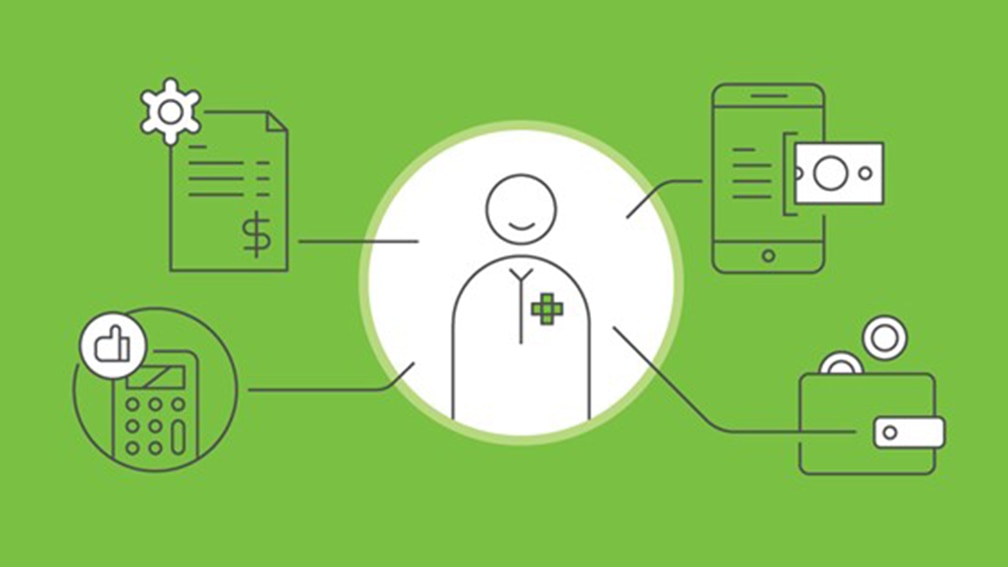7 Benefits of Patient Financing for Health and Wellness Practices
Flexible financing gives patients and clients another way to pay for care at the time of service, which helps both patients and your practice. Learn more about the benefits.
By Diane Faulkner
Digital Writer
Posted Feb 21, 2025 - 5 min read

In today's health and wellness landscape, patients are shouldering a greater burden of out-of-pocket costs, including larger deductibles, increased medication costs and other unexpected costs of medical care, according to a Synchrony Lifetime of Healthcare Costs report.1 Similarly, the American Hospital Association’s 2023 Costs of Caring study reports that patient costs rose 17.5% between 2019 and 2022,2 and a report by PwC's Health Research Institute predicts an 8% rise in costs in 2025.3
Many patients and clients do not have the money to pay for the care they want or need at the moment they need it. In fact, 38% of adults in the United States delay or forgo healthcare treatments, cut back on routine expenses or borrow money to pay their medical expenses, according to an Advisory Board daily briefing.4
This is where patient financing can be a game changer.
What Is Patient Financing?
Patient financing offers patients and clients a way to pay their health and wellness costs over time, in installments and in various other ways. Health and wellness practices that offer financing are more likely to maintain healthy accounts receivable and improve patient satisfaction.
There are different types of patient financing (which may also be called healthcare financing or health and wellness financing) that could be offered, such as:
- Private or public patient assistance programs
- In-house financing
- Third-party financing, like:
- A health and wellness credit card with promotional financing offers such as
- No Interest if Paid in Full within 6, 12, 18, or 24 months
- Reduced APR with fixed monthly payments for 24, 36, 48 and 60 months
- Installment loans, such as Buy Now, Pay Later
- A health and wellness credit card with promotional financing offers such as
7 Benefits of Patient Financing
Patient financing solutions can provide many advantages for both patients and providers, including the benefits listed below.
1. Manageable payment options
According to the 2023 CareCredit Healthcare Journey Research study, 1 out of every 2 patients struggles to pay their out-of-pocket expenses, and 1 out of 2 says they delay care due to those costs.5
With financing, patients can break down their health and wellness bills into budget-friendly payments, allowing them to pay what they owe over time. When providers offer flexible payment options, they make it easy for patients and clients to move forward with care recommendations.
2. Higher patient satisfaction
The CareCredit healthcare journey study also found that patients report feelings of stress, anxiety, sadness, annoyance or frustration in relation to their out-of-pocket health and wellness expenses. Additionally, more than half (59%) said their healthcare providers offer limited options for paying for out-of-pocket expenses, and three-fourths said they would seek more services if they had ways to pay for them.5
By offering financing solutions, providers address a leading concern and help patients and clients bridge the gap in covering their out-of-pocket expenses, which can help improve the patient financial experience, increase satisfaction and even boost patient loyalty and retention.
3. Opportunity to increase patient volume
Many people skip treatment because of the high costs. They may reconsider, however, if they know they can have their procedures and pay over time. Offering customer-oriented payment options can serve as a differentiator for health and wellness practices and give patients and clients greater opportunity to say yes to care, which can help benefit the patient experience.
4. Greater willingness to pay at the time of service
By offering healthcare financing solutions to patients, providers increase their chances of collecting payment at the time of service, making cash flow less of a worry. TechTarget's Rev Cycle Management newsletter points out that the most common reason patients don't pay is a lack of flexible payment options, not an unwillingness to pay.6
5. Reduced collections burden
Healthcare financing options can help reduce staff time and energy spent manually collecting defaulted bills. With third-party patient financing services, the lender is responsible for collecting payments and handling defaults. Some third-party financing companies offer to pay providers within a few days, regardless of when the patient or client fully repays the bill.
6. Maximized opportunity for return visits
Some financing companies, such as CareCredit, offer revolving lines of credit, which means existing cardholders can use their CareCredit credit cards for health and wellness expenses without having to submit a new credit application each time.* This makes it easy for patients and clients to keep coming back to your practice for recommended care.

7. Higher levels of treatment compliance
When patients and clients are able to pay for their health and wellness expenses over time, it may help them move forward with the recommended treatment or care. This can help patients avoid more serious health issues down the road caused by delayed or skipped care, and it's a major win for providers who ultimately want the best outcomes for their patients and clients.
How to Begin Offering Patient Financing
There are many patient financing companies on the market. Providers should do their research and look for companies that offer:
- A solid reputation, with experience to back it up. Whether through word of mouth or research alone, seek a healthcare financing company that stands the test of time and has the reviews to show for it.
- A swift payment process. Choose a company that will allow you to receive payment in just a few days so your team doesn't have to do extra accounts receivable work.
- Fast but thorough application and approval process. Dragging out applications could discourage patients and clients from using financing when they want or need it.
- Digital integration. It's best to search for a patient financing company that provides a seamless digital experience for both your patients and your staff. Look for a financing program that allows for applications and payments on mobile devices and possible integration with your practice management system (PMS).
Health and wellness providers should also consider the following when bringing patient financing into their practice:
- Staff training. Communication and transparency around financial issues are very important to patient satisfaction. When staff are trained to explain the financing options and anticipate patient concerns and needs, providers are more likely to receive payments in a timely manner.
- Patient financing program marketing. Whether through pamphlets, information on patient portals or emailed information, providers should make financing options available and visible to their patients or clients on a regular basis. Questions about finances can be sensitive and even embarrassing for patients to bring up, so make it easy for them.
- The complexities that come with in-house financing options. Providers that choose to offer in-house financing should have an up-to-date list of eligibility criteria available to patients and clients, and they should have strong written policies and guidelines that are in compliance with federal regulations. It's also important for them to understand the potential losses that occur when patients default on their payments.
Offering patients financing for their care can improve patient satisfaction, loyalty and the flow of patient payments to the practice. It may also help them move forward with care recommendations.
Offering Flexible Financing at Your Practice
If you are looking for a way to connect your patients or clients with flexible financing that empowers them to pay for the care they want and need, consider offering CareCredit as a financing solution. CareCredit allows cardholders to pay for out-of-pocket health and wellness expenses over time while helping enhance the payments process for your practice or business.
When you accept CareCredit, patients or clients can see if they prequalify with no impact to their credit score, and those who apply, if approved, can take advantage of special financing on qualifying purchases.* Additionally, you will be paid directly within two business days.
Learn more about the CareCredit credit card as a patient financing solution or start the provider enrollment process by filling out this form.
Author Bio
Diane Faulkner is a freelance writer, speaker and human resource consultant with more than 30 years of experience in B2B content for HR, technology, health/wellness and finance. Before her writing career, Diane was a vice president of human resources for a major credit union. She is a certified senior professional in human resources (SPHR).
Healthcare payment and financing solution
The CareCredit health and wellness credit card helps improve the payment experience for patients and clients, and your financial performance.
Get StartedReady to help more patients and clients get the care they want and need?
Get StartedReady to help more patients and clients get the care they want and need?
Get Started* Subject to credit approval.
The information, opinions and recommendations expressed in the article are for informational purposes only. Information has been obtained from sources generally believed to be reliable. However, because of the possibility of human or mechanical error by our sources, or any other, Synchrony and any of its affiliates, including CareCredit, (collectively, “Synchrony”) does not provide any warranty as to the accuracy, adequacy, or completeness of any information for its intended purpose or any results obtained from the use of such information. The data presented in the article was current as of the time of writing. Please consult with your individual advisors with respect to any information presented.
© 2025 Synchrony Bank.
Sources:
1 "2022 Lifetime of Healthcare Costs," Synchrony. August 2022. (CareCredit is a Synchrony solution.)
2 "2023 Costs of caring: The financial stability of America’s hospitals and health systems is at risk as the costs of caring continue to rise," American Hospital Association. April 2023. Retrieved from: https://www.aha.org/guidesreports/2024-05-01-2023-costs-caring
3 "PwC's 2025 medical cost trend report reveals rising healthcare costs," PwC. Accessed January 29, 2025. Retrieved from: https://www.pwc.com/us/en/industries/health-industries/health-research-institute/next-in-health-podcast/pwc-2025-medical-cost-trend-report-reveals-rising-healthcare-costs.html
4 "The impact of rising healthcare costs, in 4 charts," Advisory Board. Updated March 18, 2023. Retrieved from: https://www.advisory.com/daily-briefing/2022/08/09/health-care-inflation
5 “Healthcare Journey Research Consumers and Providers," Synchrony, 2023. (CareCredit is a Synchrony solution.)
6 "How personalized payment plans improve patient collections," TechTarget Rev Cycle Management. September 12, 2022. Retrieved from: https://revcycleintelligence.com/news/How-Personalized-Payment-Plans-Improve-Patient-Collections




